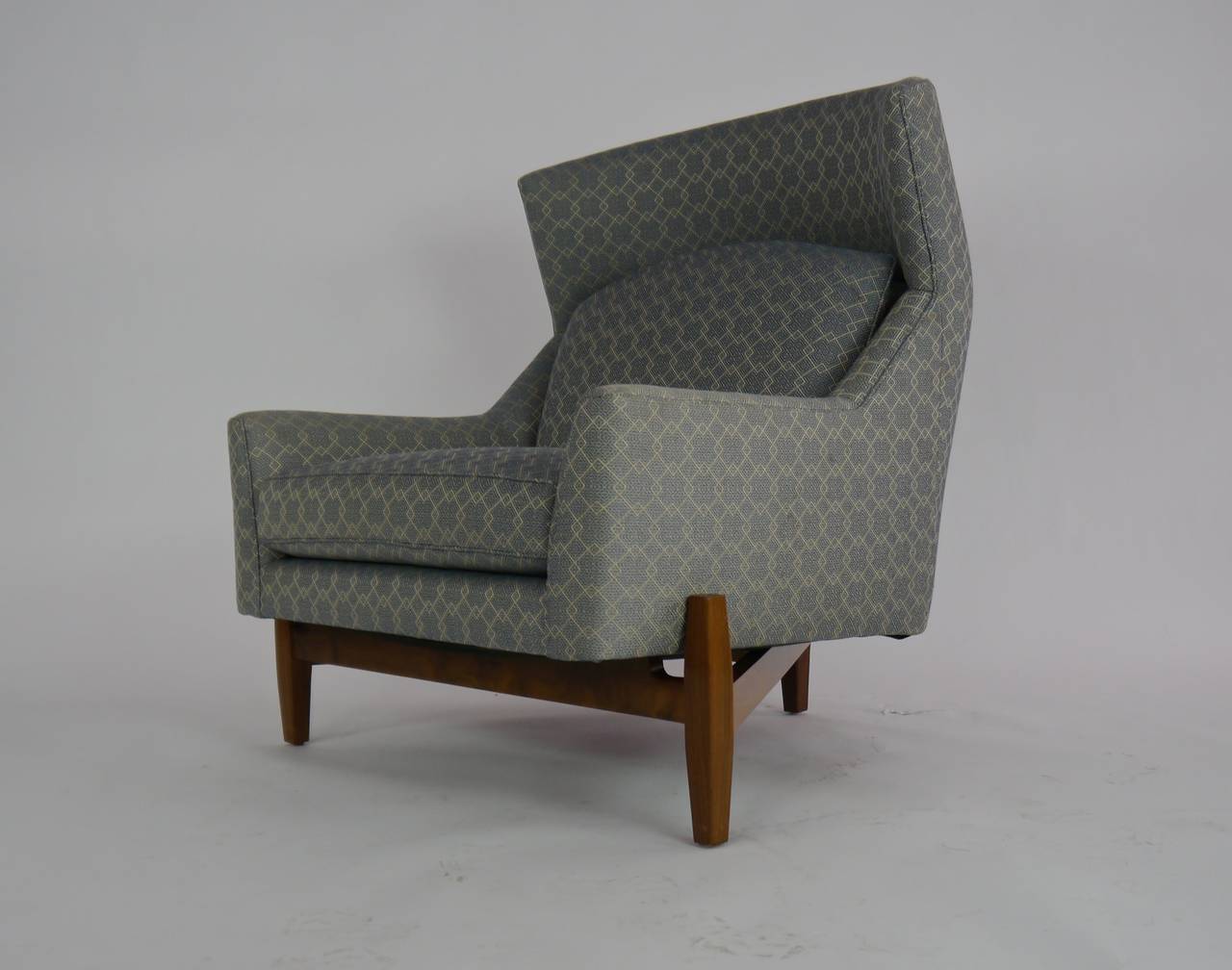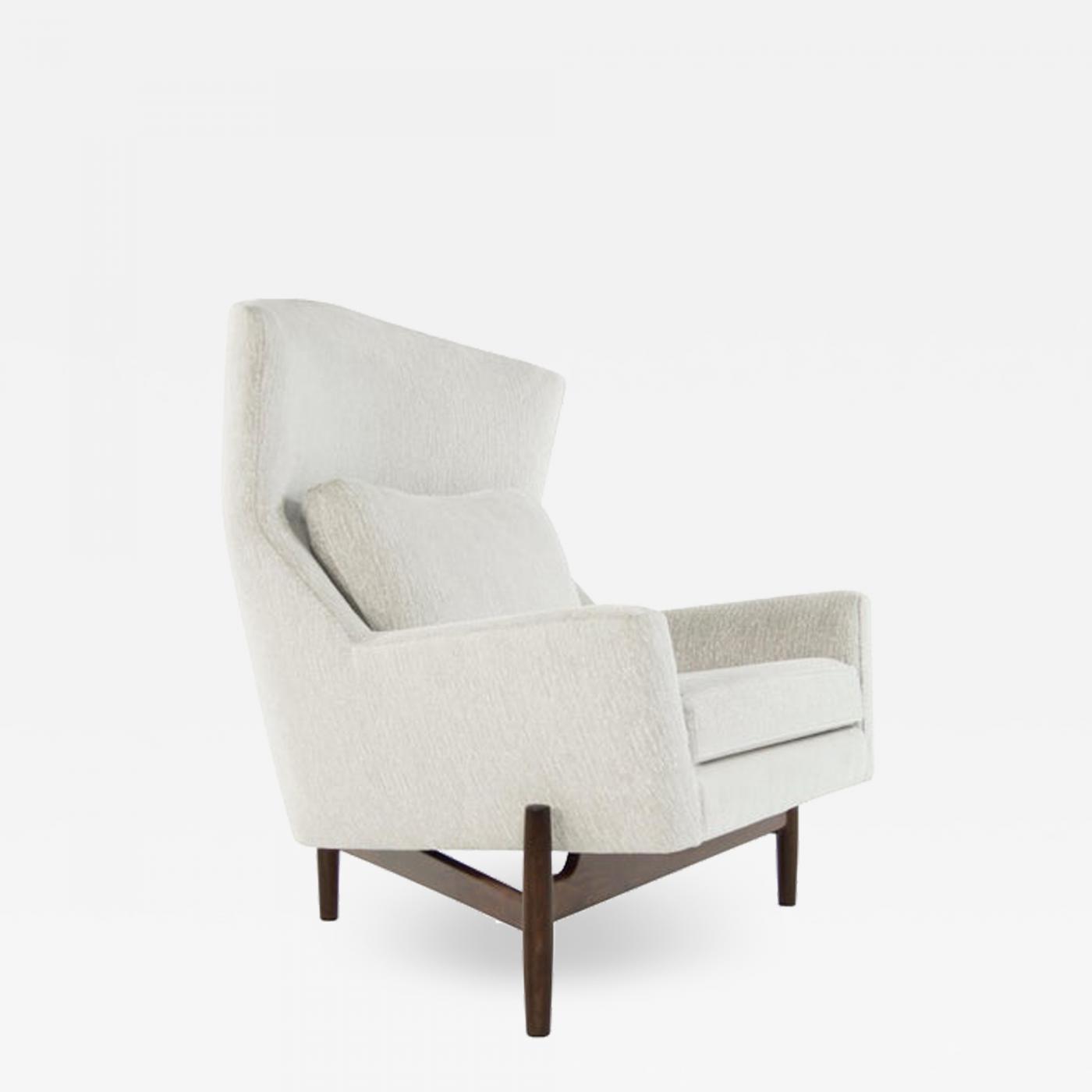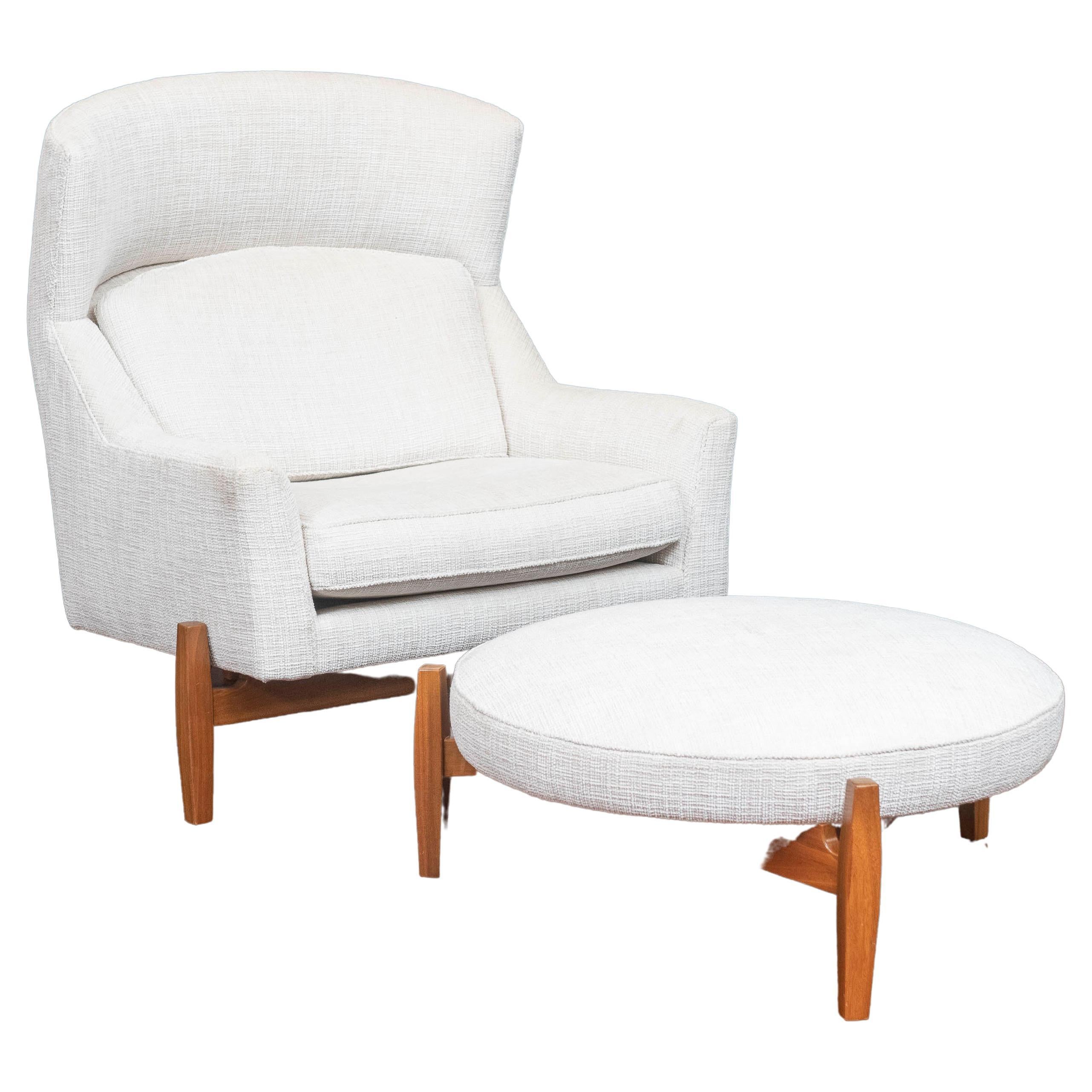Jens Risom

Jens Risom, a Danish-American architect and furniture designer, is renowned for his influential role in shaping mid-century modern design. His commitment to simplicity, functionality, and craftsmanship defined his approach to furniture design, making him a pioneer of the modern aesthetic.
Jens Risom’s Design Philosophy and Its Influence on the “Big Chair”
Risom’s design philosophy was deeply rooted in the principles of functionality and simplicity. He believed that furniture should serve its purpose efficiently and aesthetically, without unnecessary embellishments. This approach is evident in the “Big Chair,” which embodies the essence of Risom’s design philosophy. The “Big Chair” is a testament to Risom’s belief in the importance of comfort and functionality in furniture design. Its generous proportions, supportive back, and comfortable seating make it an ideal piece for relaxation and contemplation. Risom’s design philosophy, emphasizing functionality and simplicity, significantly influenced the “Big Chair” and made it a timeless classic.
Biographical Details of Jens Risom and His Connection to the “Big Chair”, Jens risom big chair
Jens Risom was born in Copenhagen, Denmark, in 1916. He studied architecture at the Royal Danish Academy of Fine Arts before immigrating to the United States in 1939. Risom’s design journey began in the 1940s, when he established his own furniture company in New York City. During this time, he designed a range of furniture pieces that reflected his minimalist aesthetic and functional approach. The “Big Chair” was one of Risom’s early designs, created in 1941. The chair’s design was inspired by Risom’s desire to create a comfortable and functional chair that would be suitable for both home and office settings.
Key Design Principles Employed by Jens Risom in His Furniture Creations
Jens Risom’s furniture creations were characterized by a number of key design principles, including:
- Simplicity: Risom believed that furniture should be simple and uncluttered, with clean lines and minimal ornamentation. He avoided unnecessary details and focused on creating functional and aesthetically pleasing forms.
- Functionality: Risom’s furniture was designed to be practical and comfortable, serving its intended purpose effectively. He prioritized functionality over form, ensuring that his pieces were both beautiful and useful.
- Craftsmanship: Risom placed a high value on craftsmanship, believing that well-made furniture would last for generations. He worked with skilled artisans to produce his designs, ensuring that each piece was meticulously crafted.
- Materials: Risom favored natural materials, such as wood, leather, and wool, for their durability and beauty. He believed that these materials would age gracefully over time, enhancing the character of his furniture.
The “Big Chair” Design: Jens Risom Big Chair

The Jens Risom “Big Chair,” a quintessential piece of mid-century modern design, is a testament to Risom’s minimalist aesthetic and functional approach. This iconic chair, designed in 1942, has become a symbol of simplicity and comfort, and it continues to be admired for its timeless elegance and enduring quality.
The Distinctive Features of the “Big Chair”
The “Big Chair” is characterized by its generous proportions, sturdy construction, and minimalist design. Its signature features include:
- Dimensions: The chair is known for its substantial size, providing ample seating space. It typically measures around 32 inches wide, 35 inches deep, and 30 inches high.
- Materials: The “Big Chair” is typically constructed from solid wood, such as walnut or oak, for its durability and natural beauty. The frame is often complemented with leather or fabric upholstery, offering a comfortable and luxurious seating experience.
- Construction: Risom’s signature design principles are evident in the “Big Chair’s” construction. The chair features a simple yet robust frame, utilizing mortise-and-tenon joinery, a traditional woodworking technique that ensures strength and longevity.
- Minimalist Design: The “Big Chair” embodies Risom’s minimalist approach, characterized by clean lines, uncluttered forms, and a focus on functionality. The chair’s simple silhouette and lack of ornamentation create a sense of tranquility and sophistication.
Comparison with Other Risom Designs
The “Big Chair” shares several design elements with other notable pieces by Jens Risom, such as:
- Emphasis on Functionality: Risom’s designs prioritize functionality and comfort, evident in the “Big Chair’s” generous proportions and supportive structure. This focus on functionality is also seen in other Risom pieces, such as his iconic “Model 61” chair and the “Model 22” side table.
- Use of Natural Materials: Risom favored natural materials like wood, leather, and wool, which he believed added warmth and authenticity to his designs. This preference is reflected in the “Big Chair” and other Risom pieces, such as the “Model 23” sofa and the “Model 13” coffee table.
- Minimalist Aesthetics: Risom’s minimalist aesthetic, characterized by clean lines, uncluttered forms, and a focus on functionality, is a defining characteristic of his work. The “Big Chair” embodies this aesthetic, and it is also evident in other Risom designs, such as the “Model 41” armchair and the “Model 31” dining chair.
Evolution of the “Big Chair” Design
The “Big Chair” design has undergone some variations and modifications over time, reflecting changing tastes and technological advancements:
- Materials: While the original “Big Chair” was primarily constructed from solid wood, later versions have incorporated other materials, such as steel or aluminum, for structural support or visual contrast.
- Upholstery: The “Big Chair” has been offered with a variety of upholstery options, including leather, fabric, and even vinyl, catering to different preferences and budgets.
- Variations in Form: The basic design of the “Big Chair” has remained consistent, but there have been subtle variations in form, such as changes in the armrests, backrest, or overall proportions, to accommodate different seating styles or aesthetic preferences.
The “Big Chair” Today

The Jens Risom “Big Chair,” a design icon born in the mid-20th century, continues to resonate in contemporary design. Its enduring appeal stems from its timeless form, exceptional comfort, and adaptability to diverse settings. Today, the “Big Chair” remains a coveted piece for its ability to blend seamlessly with modern aesthetics while retaining a sense of classic sophistication.
The “Big Chair” in Contemporary Settings
The “Big Chair” transcends its historical context and seamlessly integrates into modern living spaces. Its versatility allows it to be featured in various settings, each showcasing its unique appeal.
- Living Room: The “Big Chair” serves as a statement piece in contemporary living rooms, offering a comfortable haven for relaxation and conversation. Its bold yet elegant form complements minimalist interiors, while its plush upholstery provides an inviting sanctuary.
- Home Office: In today’s increasingly blurred lines between work and home, the “Big Chair” offers a comfortable and stylish solution for home offices. Its generous proportions and supportive design make it ideal for extended periods of work, fostering both productivity and comfort.
- Reading Nook: The “Big Chair” is the perfect companion for a dedicated reading nook. Its enveloping design creates a cozy and inviting atmosphere, encouraging hours of peaceful reading. Its timeless appeal adds a touch of elegance to any reading space.
“I love the way the “Big Chair” feels like a warm embrace. It’s the perfect place to curl up with a good book and forget about the world outside.” – Sarah, a “Big Chair” enthusiast.
The “Big Chair” and Sustainability
The “Big Chair” designed by Jens Risom is more than just a piece of furniture; it embodies the principles of good design, durability, and sustainability. Its enduring appeal lies not only in its timeless aesthetics but also in its commitment to responsible material choices and construction techniques.
Materials and Environmental Impact
The “Big Chair” is a testament to the enduring power of natural materials. Crafted from solid wood, typically oak or walnut, it embodies the essence of sustainable design. Solid wood is a renewable resource, and its use in furniture contributes to a reduced environmental footprint compared to synthetic materials. The natural aging process of wood adds character and depth to the chair over time, making it a truly heirloom piece. However, it’s crucial to source wood from responsibly managed forests to ensure long-term sustainability.
Comparing the “Big Chair” with Contemporary Furniture
The “Big Chair” stands out from many contemporary furniture pieces in its commitment to durability and longevity. While contemporary furniture often emphasizes trends and affordability, the “Big Chair” prioritizes quality and timeless design. Its solid wood construction, combined with well-crafted joinery, makes it a piece that can be passed down through generations. In contrast, many contemporary pieces are made from cheaper materials like particleboard or MDF, which are less durable and have a shorter lifespan. This can lead to increased waste and resource consumption in the long run.
Maintaining the “Big Chair” for Longevity
- Regular dusting and cleaning with a soft cloth can help preserve the chair’s finish and prevent dust accumulation.
- Avoid placing the chair in direct sunlight or near heat sources to prevent warping or fading of the wood.
- Apply a wood polish or oil periodically to nourish and protect the wood, enhancing its natural beauty and longevity.
- Use furniture pads to protect the chair’s legs from scratches and damage when placed on hard floors.
Jens risom big chair – Jens Risom’s big chair is the epitome of mid-century modern design – sleek, functional, and a little bit intimidating. But if you’re looking for something that screams “power” for your little one, you might want to check out the iron throne baby chair.
After all, what’s more iconic than a tiny tyrant perched atop a miniature replica of the most feared seat in Westeros? Just make sure your toddler doesn’t develop a taste for dragons… or banishing their siblings to the dungeon.
Jens Risom’s big chair is a classic, but let’s face it, even a design icon needs a little sprucing up sometimes. If you’re throwing a baby shower, why not take inspiration from the baby shower chair decoration ideas out there?
After all, a little whimsy never hurt anyone, and it’s a great way to add a personal touch to your Jens Risom chair. Just remember, no glitter on the leather!
